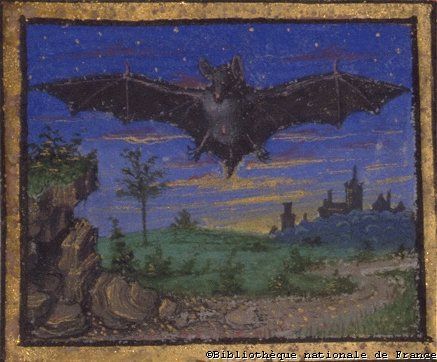Three theories account for the origin of vampire bats.

- The first proposes that vampire bats originated from fruit-eating bats. This theory suggests that large, strong upper incisor teeth would make fruit bats well suited to switching to blood. This theory does not explain why blood-feeding did not also appear among the Old World Fruit Bats, the Pteropodidae.
- The second theory suggests that the ancestors of vampire bats acquired a taste for blood by feeding on ticks and other blood-feeding ectoparasites of large mammals. Today in Africa, birds known as Ox-peckers make their living by feeding on ticks.
- The third theory proposes that the ancestors of vampire bats began to feed on insects and insect larvae they found in wounds on large animals. This theory notes that insectivorous bats often feed where there are many insects and some of them adjust their hunting style according to the situation. Throughout the tropics, flies known as screw worms lay their eggs in wounds and their larvae develop into large masses. This theory identifies strong, sharp upper incisor teeth as the key to why blood-feeding only appeared in New World bats.
Many New World Leaf-nosed Bats have large, strong upper incisors. These teeth are lacking from those Old World bats with flexible foraging behavior, namely the Slit-faced Bats and the False Vampire Bats.
